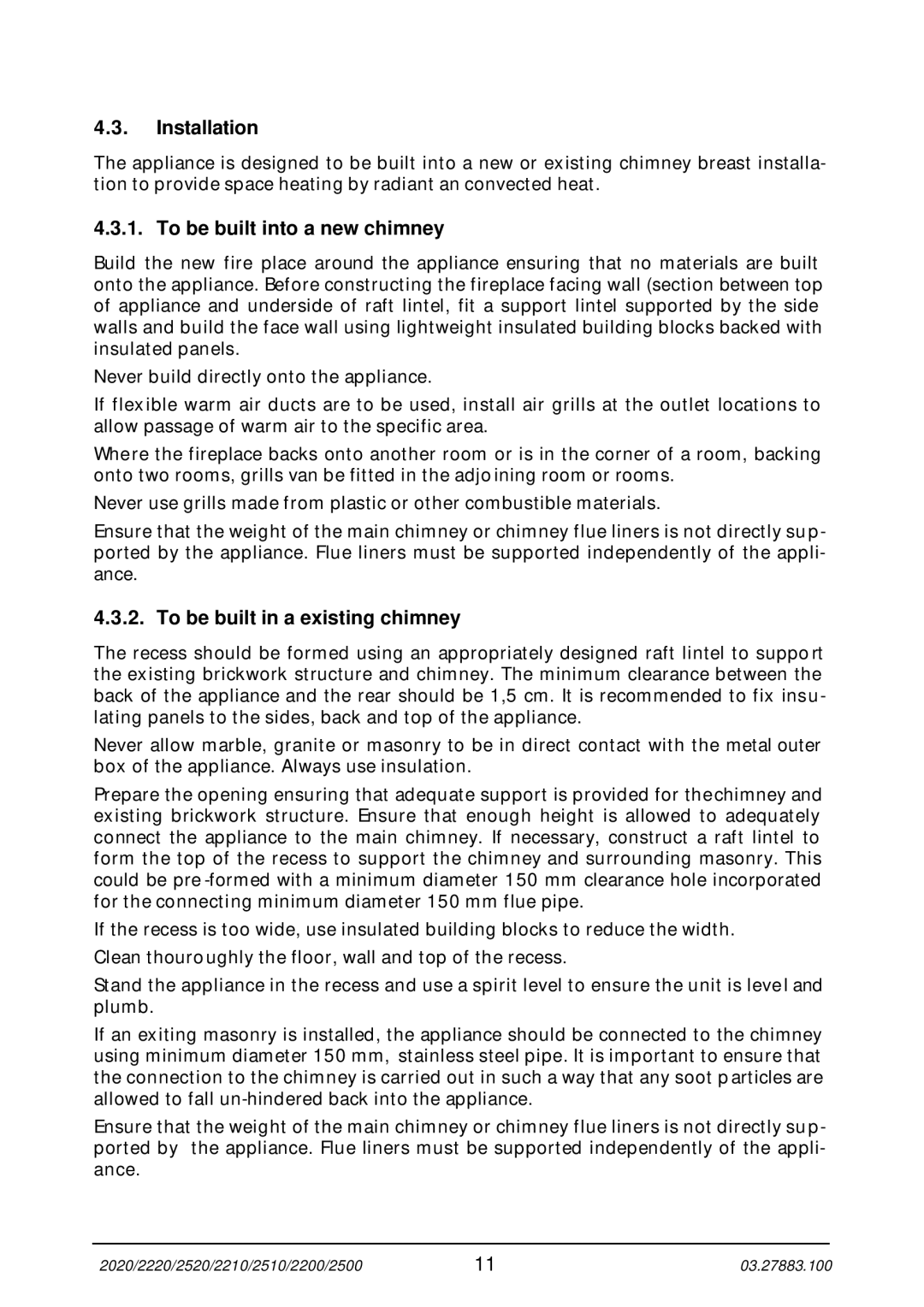4.3.Installation
The appliance is designed to be built into a new or existing chimney breast installa- tion to provide space heating by radiant an convected heat.
4.3.1. To be built into a new chimney
Build the new fire place around the appliance ensuring that no materials are built onto the appliance. Before constructing the fireplace facing wall (section between top of appliance and underside of raft lintel, fit a support lintel supported by the side walls and build the face wall using lightweight insulated building blocks backed with insulated panels.
Never build directly onto the appliance.
If flexible warm air ducts are to be used, install air grills at the outlet locations to allow passage of warm air to the specific area.
Where the fireplace backs onto another room or is in the corner of a room, backing onto two rooms, grills van be fitted in the adjoining room or rooms.
Never use grills made from plastic or other combustible materials.
Ensure that the weight of the main chimney or chimney flue liners is not directly sup- ported by the appliance. Flue liners must be supported independently of the appli- ance.
4.3.2. To be built in a existing chimney
The recess should be formed using an appropriately designed raft lintel to support the existing brickwork structure and chimney. The minimum clearance between the back of the appliance and the rear should be 1,5 cm. It is recommended to fix insu- lating panels to the sides, back and top of the appliance.
Never allow marble, granite or masonry to be in direct contact with the metal outer box of the appliance. Always use insulation.
Prepare the opening ensuring that adequate support is provided for thechimney and existing brickwork structure. Ensure that enough height is allowed to adequately connect the appliance to the main chimney. If necessary, construct a raft lintel to form the top of the recess to support the chimney and surrounding masonry. This could be pre
If the recess is too wide, use insulated building blocks to reduce the width. Clean thouroughly the floor, wall and top of the recess.
Stand the appliance in the recess and use a spirit level to ensure the unit is level and plumb.
If an exiting masonry is installed, the appliance should be connected to the chimney using minimum diameter 150 mm, stainless steel pipe. It is important to ensure that the connection to the chimney is carried out in such a way that any soot particles are allowed to fall
Ensure that the weight of the main chimney or chimney flue liners is not directly sup- ported by the appliance. Flue liners must be supported independently of the appli- ance.
2020/2220/2520/2210/2510/2200/2500 | 11 | 03.27883.100 |
